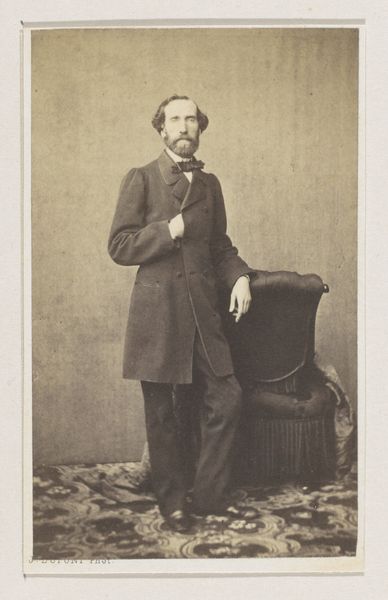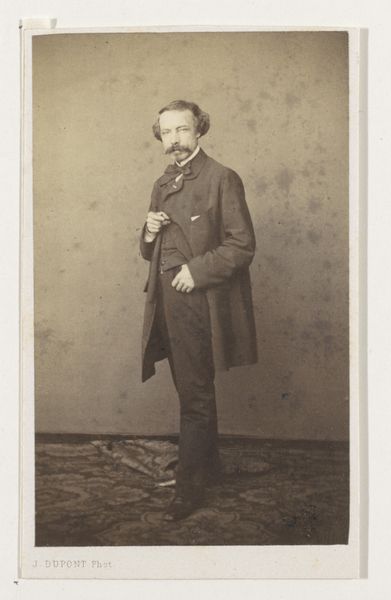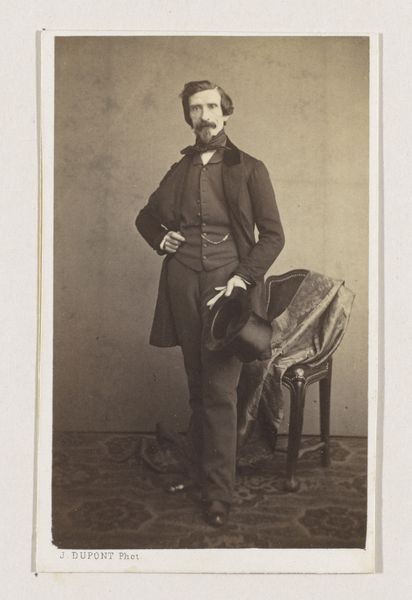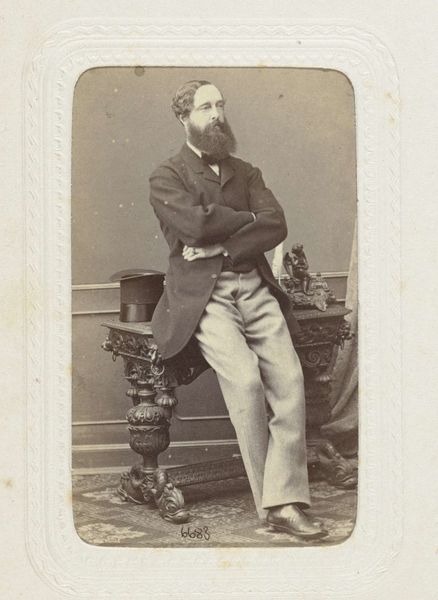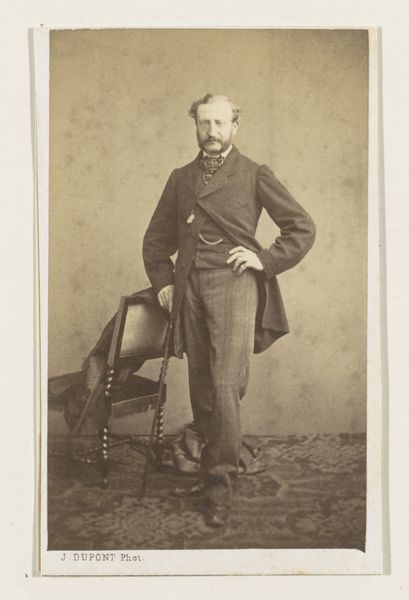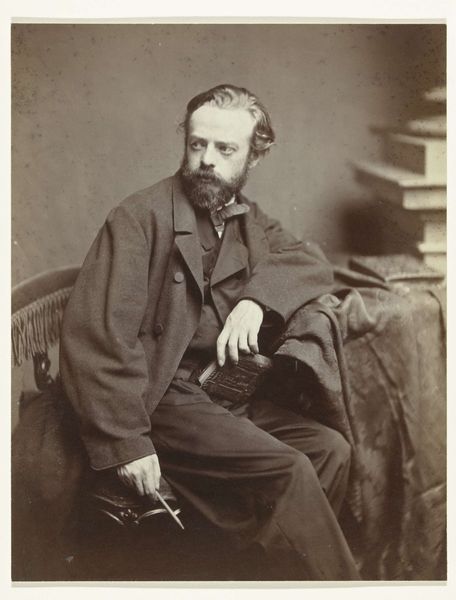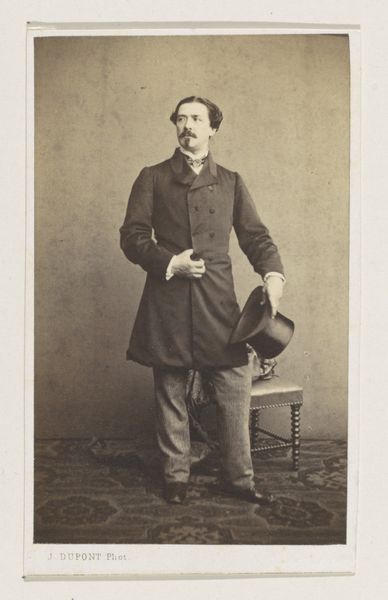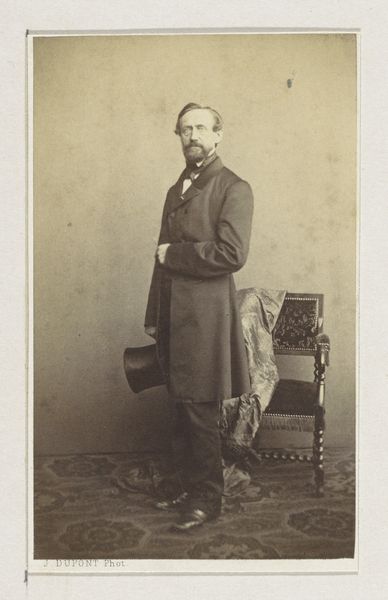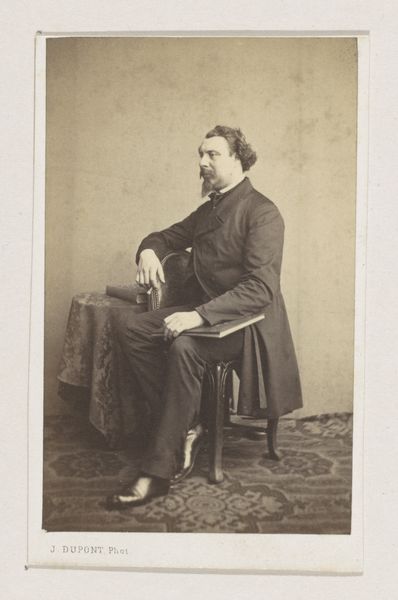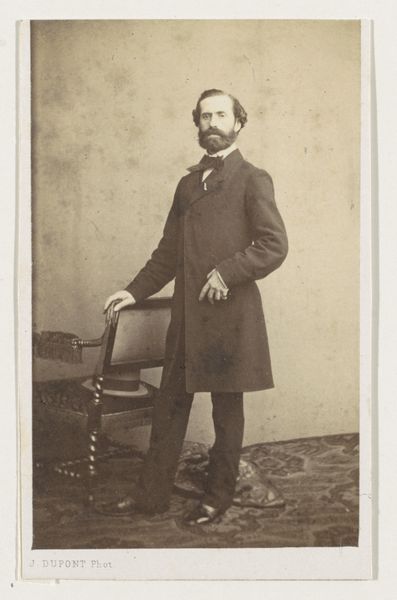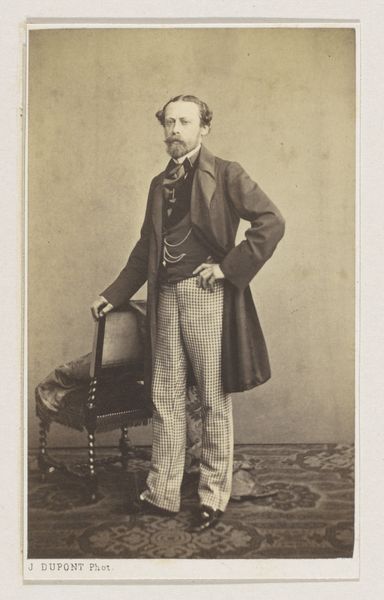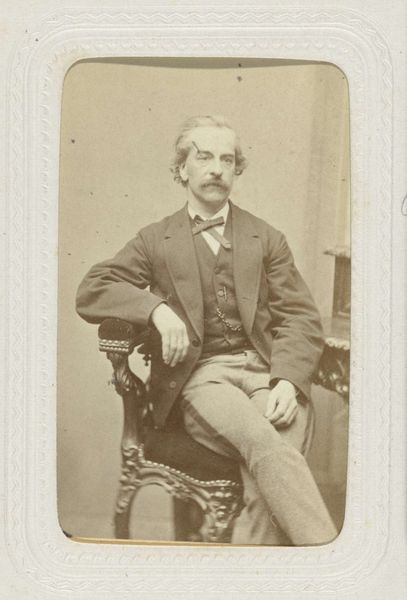
Dimensions: height 394 mm, width 234 mm, height 285 mm, width 330 mm
Copyright: Rijks Museum: Open Domain
Curator: Here we have a striking gelatin-silver print portrait dating from 1855 to 1890, possibly depicting one George Austin. Editor: There's something deeply melancholic about this gentleman's pose and the soft sepia tones. It speaks of a certain Victorian seriousness, a contemplation of self. Curator: Indeed. His posture, leaning casually against what seems to be a plinth, subtly denotes a claim to upper-class status. We must consider the societal constraints imposed on men during that era – the expectations around masculinity and social presentation. Note also how photography served as a tool for documenting identity within specific class and gender roles. Editor: The beard, quite magnificent, and the watch chain, act as key markers of status and respectability within the symbolic visual language of the time. But his eyes...they carry a shadow of introspection, perhaps a sense of isolation despite his outward appearance of affluence. Curator: Absolutely, we cannot disregard how symbols like the meticulously styled beard tie into societal conceptions of virility and power, while the gentleman's gaze avoids direct contact with the viewer. Does this imply introspection, reservation, or possibly societal unease mirrored through aesthetic convention? Editor: His averted gaze hints at untold stories, secrets maybe. I keep being drawn to the hat resting atop the plinth. Hats held powerful significance then, didn't they, often dictating social position? The placement there suggests a deliberate attempt to both acknowledge, yet subtly undermine, that very formality. Curator: That’s an interesting point. This subtle deconstruction could echo broader social critiques happening within intellectual circles in Europe as well. By challenging established representational codes within photography itself, maybe the sitter or photographer sought a form of quiet protest, allowing a glimpse into individual psychological space. Editor: Ultimately, the portrait stands as a haunting artifact – a reflection on performance and expectation within rigid societal structures. Curator: It encourages us to dissect the layers of representation and reimagine this individual beyond our immediate presumptions.
Comments
No comments
Be the first to comment and join the conversation on the ultimate creative platform.
